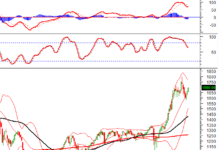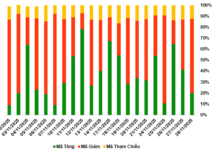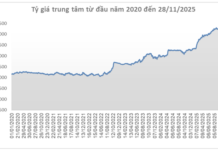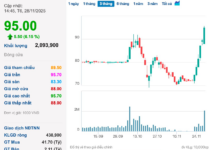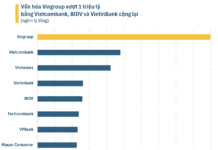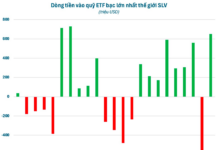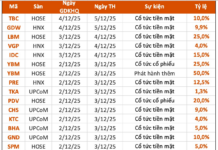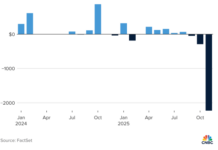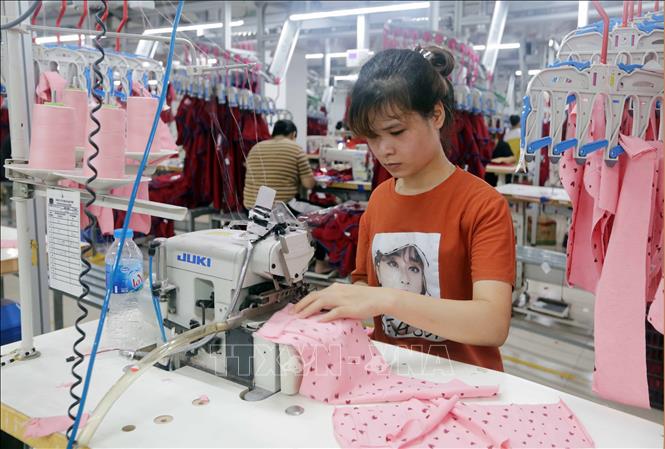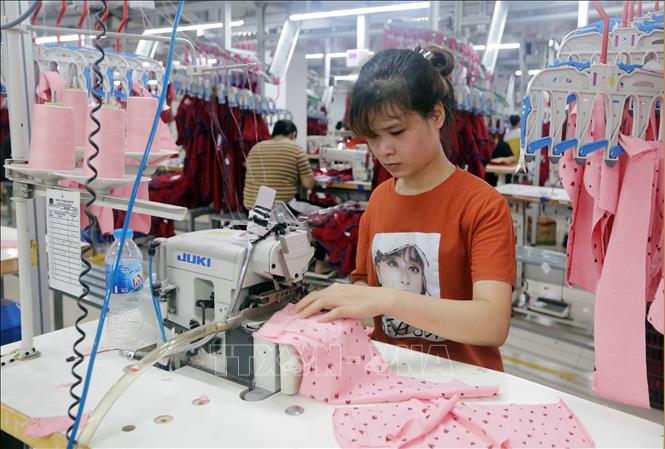
Nam Tiet Garment Company, located in An Xa Industrial Cluster, Nam Dinh province, exports millions of products to the US, Russian, and South Korean markets annually. Image: Tran Viet/ VNA
This is the first month in 2024 that the textile and garment export turnover has surpassed the 4-billion-USD mark, also being the month with the highest turnover since August 2022.
In the first seven months of 2024, exports of textiles and garments reached 23.9 billion USD, up 5.9% year-on-year, equivalent to an increase of 1.33 billion USD. Specifically, exports of textile fibers reached 2.53 billion USD, up 3.5%; garments reached 20.2 billion USD, up 6.3%; fabric pieces and other technical fabrics reached 458 million USD, up 18%; and accessories, materials, and leather and footwear reached 878 million USD, up 11.4%.
Currently, Vietnam exports textiles and garments to 113 countries and territories, with the main markets being the US, the EU, Japan, South Korea, and China.
However, according to experts, although Vietnam’s textile and garment exports have shown positive results, the volatile global economic situation will affect export industries, including textiles and garments. Therefore, domestic enterprises need timely support and information from Vietnamese trade offices in foreign markets.
At present, domestic enterprises lack information about these technical measures, such as the US Uyghur Forced Labor Prevention Act, the German Supply Chain Due Diligence Act, and the EU Directive on Supply Chain Due Diligence.
The Vietnam Textile and Apparel Association has requested that Vietnamese trade offices abroad, especially in major export markets, keep abreast of the latest information and provide early warnings to domestic enterprises so that they can take appropriate measures.
According to the Vietnam Textile and Apparel Association, the textile and garment industry in Bangladesh – the world’s second-largest exporter of textiles and garments (after China) – is facing difficulties, with many Bangladeshi textile and garment exporters experiencing a 25-40% decrease in the number of orders. In addition, they are facing challenges due to temporary reductions in production capacity and pressure to increase wages for textile and garment workers, which will reduce their competitive advantage in terms of labor costs.
Therefore, Vietnamese textile and garment enterprises need to take advantage of their competitive strengths. From now until the end of the year is the peak shopping season, and enterprises are striving to introduce new products in terms of materials and designs to meet the strict standards of partners, aiming to achieve the industry’s export target of 44 billion USD for the year.
To achieve this goal, in the coming time, textile and garment enterprises need to diversify markets, customer segments, and products, and increase competitiveness. Especially, they need to find ways to take full advantage of the opportunities brought about by free trade agreements.



